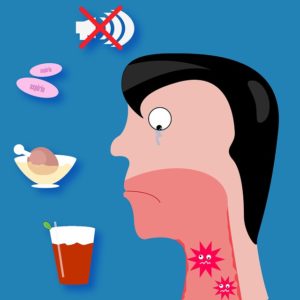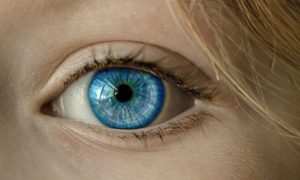
Laryngitis
Laryngitis, known as inflammation of the larynx, is the most common cause of hoarseness and voice loss. It is very common in viral infections, such as a cold, flu, or adenovirus. Acute laryngitis is caused by an illness, while chronic laryngitis may be a secondary symptom of another problem like acid reflux, smoking, or severe thrush.
There is a lot of advice that goes around about what can “cure” laryngitis or get rid of hoarseness. Hydration is always key. Some of the other advice is more anecdotal. But above all, whatever you do for a hoarse voice, DO NOT WHISPER!
Laryngopharyngeal Reflux Disease (LPRD)
LRPD is a condition where stomach acid refluxes into and burns the vocal cords. It may or may not accompany GERD. It causes intermittent to chronic hoarseness, swallowing troubles, throat pain, or a constant sensation that something is stuck in your throat.
Misuse and Overuse
Misuse of your voice is defined as the inefficient use of your voice. It may stem from poor posture, poor breath support, or poor hydration. Overuse of your voice is defined as excessively loud or prolonged use of your voice.
Lesions
Vocal cord lesions are benign growths on the vocal cords that interfere with normal vibration. These can result from repeatedly prolonged periods of misuse or overuse. They will cause chronic hoarseness or sporadic voice-silencing. They come in three varieties and are all treatable: nodules, polyps, and cysts.
Nodules require vocal rest and voice therapy and training to help make sure they don’t happen again. Polyps and cysts require micro-surgery where the growth is removed, and then rest and therapy and training will follow.
Hemorrhage
If you have a sudden loss of voice after yelling, then it is possible a hemorrhage occurred. A hemorrhage is when blood vessels in the surface of the vocal cord burst and fill it with blood. COMPLETE REST is required until the blood is reabsorbed by the body.
Paresis and Paralysis
Paresis is the fancy word for weakness. Vocal weakness can occur during a viral infection or after neck or throat surgery. It can be temporary and strength will return on its own after a recovery period, or it can be permanent. Prolonged or permanent vocal weakness can be improved somewhat through therapy and training.
Paralysis, on the other hand, is neurologically based, whether damage happened in the area of the brain that controls the voice and supporting structures, or the nerves in and around the larynx are damaged. This can also be temporary or permanent and is generally one-sided.
Symptoms of a weakened or paralyzed vocal cord include noisy breathing – like something is hanging in the way of the air flow. And breathy talking – like when someone is trying to use their “sexy” voice and there’s more air making noise than vocal vibrations. There is a surgical repair process that involves taking the working vocal fold and stretching it over so when it activates, it will still come in contact with the unmoving vocal fold.
Callbacks
Voice
Thrush – Mouth Issues
Connect with me
Support us on Patreon
Give us your Feedback
Join the Pharmacist Answers Podcast Community on Facebook
Subscribe: iTunes, Stitcher, GooglePlay, TuneIn Radio
Like the Facebook page
Music Credits: Up In My Jam (All Of A Sudden) by – Kubbi https://soundcloud.com/kubbiCreative Commons — Attribution-ShareAlike 3.0 Unported— CC BY-SA 3.0 http://creativecommons.org/licenses/b…Music provided by Audio Library https://youtu.be/tDexBj46oNI





